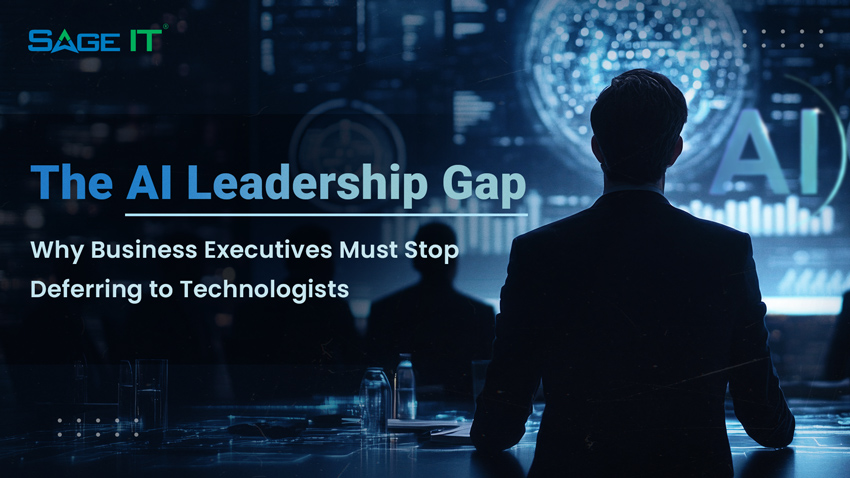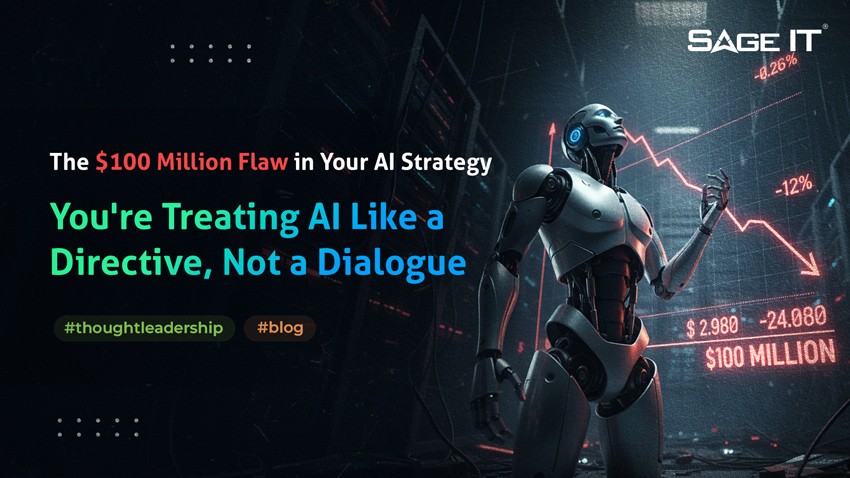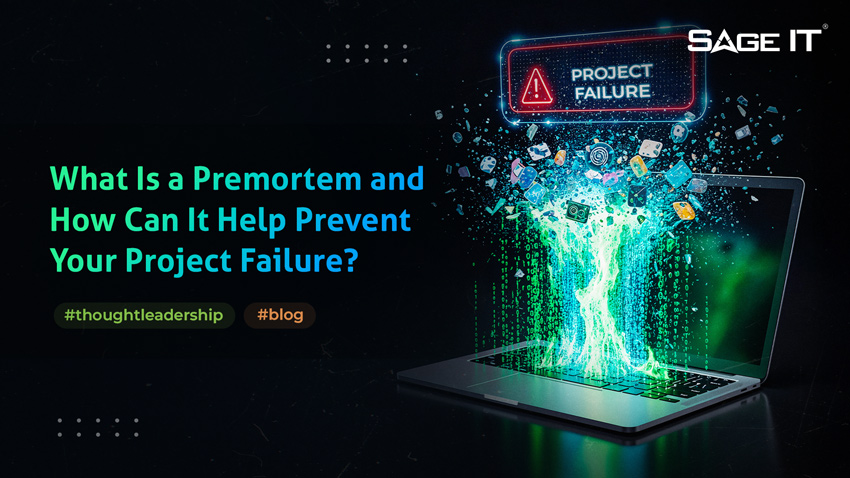Most AI initiatives still fail to deliver measurable business value. Multiple studies, including recent research from RAND, and Fraunhofer, estimate that between 80 and 95 percent of AI projects stall before scaling, most often because of leadership and organizational misalignment rather than technical flaws.
Across industries, executives are outsourcing the future to technologists, hoping AI will somehow translate into strategy. It won’t.
AI is now central to business transformation, yet in too many boardrooms leadership is missing. CIOs, COOs, and even CEOs have stepped aside, assuming that engineers and data scientists will “figure out” AI’s business value.
That’s not leadership. That’s abdication.
And it’s the defining strategic risk of our time. We call this the AI Leadership Gap, and dismantling it is the next great test of executive accountability.
The AI Mirage: Big Investment, Little Impact
Enterprises are investing heavily in AI platforms, models, and infrastructure. Yet months later, momentum stalls and the question returns: Where’s the ROI?
The problem isn’t technology; it’s positioning.
Too many organizations treat AI as an IT infrastructure project rather than a strategic transformation. They deploy tools before defining purpose, chase capabilities instead of outcomes, and measure success in models instead of impact.
That kind of transformation demands cross-functional alignment, where technology, operations, and customer experience move in lockstep under a shared strategic vision.
But AI is not a plug-and-play solution. It is a strategic redefinition of how decisions are made, how teams collaborate, and how value is created. That requires C-suite accountability, not technical oversight.
When business leaders step back, AI loses its compass.
The Cost of Deference
Delegating AI strategy to technologists creates a vacuum where business priorities go unanswered. Engineers may optimize brilliantly, but they often do so for the wrong outcomes.
Consider a telecom firm that used AI to predict customer churn. The algorithm worked perfectly, but the project failed. Why? The team asked the wrong question.
The error wasn’t in the model.
It was in the question.
Instead of asking “Who will leave?” leaders should have asked “Who can we retain, and how?” The distinction is subtle but the impact was costly. Marketing dollars were wasted on lost causes, and churn increased.
AI doesn’t fail because of weak data. It fails because leaders don’t define the problem worth solving.
Why Leaders Stay Silent
Many executives hesitate to lead AI initiatives because they feel underqualified. The technology seems fast-moving, opaque, even intimidating. But this is precisely where leadership is needed most.
AI doesn’t require coding expertise. It demands strategic fluency, the ability to ask the right questions, challenge assumptions, and align solutions with purpose and ethics.
The best leaders meet AI’s complexity with a growth mindset, turning fear of the unknown into fuel for innovation and discovery.
Being AI-savvy means asking:
- How will this AI application serve our strategic goals?
- What biases are we embedding into the model?
- Are we enhancing human judgment, or are we outsourcing it?
These are leadership questions, not technical ones. And silence here is the costliest decision of all.
The Executive Playbook: 5 Mandates to Close the Gap
To reclaim the AI agenda, executives must lead from the front, not manage from the sidelines. This is the modern playbook for C-suite accountability.
1.Define Purpose Relentlessly
AI must serve strategy, not the other way around. Anchor every initiative to measurable outcomes such as customer experience, risk reduction, and revenue growth. Purpose is your North Star.
2.Demand Business Questions Before Models
Great AI starts with great framing. Replace “Can we build this?” with “Should we?” and “What will it change?” Impact follows clarity.
3.Engineer a Culture for AI Curiosity
AI thrives in environments that reward experimentation. Model the mindset yourself: encourage curiosity, tolerate intelligent failure, and celebrate learning over perfection.
4.Mandate AI Literacy Across the C-Suite
AI literacy is the new business literacy. You don’t need to code, but you must understand how algorithms influence operations, ethics, and brand trust.
Fluency means understanding not only how algorithms work, but how they impact fairness, transparency, and trust.
Ethical literacy is now an executive responsibility.
5.Demonstrate AI-Driven Decision-Making
Use AI tools personally, from generative assistants to advanced analytics. When leaders use AI, teams follow, and leadership by example accelerates adoption far more than policy.
The Risk of Tech-Driven Transformation
AI is not just a productivity enhancer. It is a force that will redefine value creation, decision rights, and even corporate ethics.
When left solely in the hands of technologists, it risks being optimized for efficiency at the expense of empathy, innovation, or customer trust.
The companies that win in the AI era will be those where strategy leads and technology follows. Where AI reflects human values, not just machine logic.
From Deference to Ownership
The AI revolution is no longer on the horizon; it is here. Leaders who hesitate risk irrelevance.
It’s time for executives to reclaim ownership of the AI agenda, not to control the technology but to ensure that it serves people, values, and purpose.
This is not about learning algorithms. It’s about defining direction, demanding accountability, and leading with conviction.
Either you shape AI, or it will shape you.
STOP WAITING. START LEADING.
The AI era won’t reward passive observers. It will reward leaders who turn ambition into action, who define how AI serves people, performance, and purpose.
At Sage IT, we help executive teams turn AI strategy into business transformation through our AI² Framework, which enables them to adopt intelligently and accelerate responsibly.
It’s not about chasing models. It’s about leading with vision, ethics, and measurable impact.
Let’s redefine what leadership looks like in the age of AI. Discover the AI² Approach
Closing Thought
In the age of AI, leadership isn’t about knowing the answers; it’s about having the courage to ask the right questions.
- Stay curious.
- Lead with conviction.
- And never surrender the wheel of strategy to the machine.












